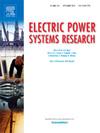Applications of the partial element equivalent circuit method in computational electromagnetics simulation: An overview
IF 3.3
3区 工程技术
Q2 ENGINEERING, ELECTRICAL & ELECTRONIC
引用次数: 0
Abstract
Computational electromagnetics (CEM) simulation is employed in diverse applications to analyze electromagnetic (EM) fields and waves, providing critical insights essential for design and optimization. Among the various available CEM techniques, such as the finite element method (FEM) and the finite-difference time-domain (FDTD) method, the partial element equivalent circuit (PEEC) method is an upcoming and preferred technique in certain applications due to its capability to integrate EM and circuit simulations, as well as its reduced computational cost. Consequently, publications based on the PEEC method have exhibited an increasing trend in the recent years. This study provides a comprehensive overview of PEEC-based applications across various fields to address prevailing problems in these applications. The survey categorizes the publications based on the type of application and provides detailed information on the techniques used and the results obtained. This work also briefly highlights the growing trend of adopting model order reduction (MOR) techniques, emphasizing their compatibility with the partial element equivalent circuit (PEEC) method to achieve more efficient and effective solutions. This review paper is valuable for researchers and engineers in related fields, aiding them in pinpointing future research opportunities and effectively employing the PEEC technique.
求助全文
约1分钟内获得全文
求助全文
来源期刊

Electric Power Systems Research
工程技术-工程:电子与电气
CiteScore
7.50
自引率
17.90%
发文量
963
审稿时长
3.8 months
期刊介绍:
Electric Power Systems Research is an international medium for the publication of original papers concerned with the generation, transmission, distribution and utilization of electrical energy. The journal aims at presenting important results of work in this field, whether in the form of applied research, development of new procedures or components, orginal application of existing knowledge or new designapproaches. The scope of Electric Power Systems Research is broad, encompassing all aspects of electric power systems. The following list of topics is not intended to be exhaustive, but rather to indicate topics that fall within the journal purview.
• Generation techniques ranging from advances in conventional electromechanical methods, through nuclear power generation, to renewable energy generation.
• Transmission, spanning the broad area from UHV (ac and dc) to network operation and protection, line routing and design.
• Substation work: equipment design, protection and control systems.
• Distribution techniques, equipment development, and smart grids.
• The utilization area from energy efficiency to distributed load levelling techniques.
• Systems studies including control techniques, planning, optimization methods, stability, security assessment and insulation coordination.
 求助内容:
求助内容: 应助结果提醒方式:
应助结果提醒方式:


